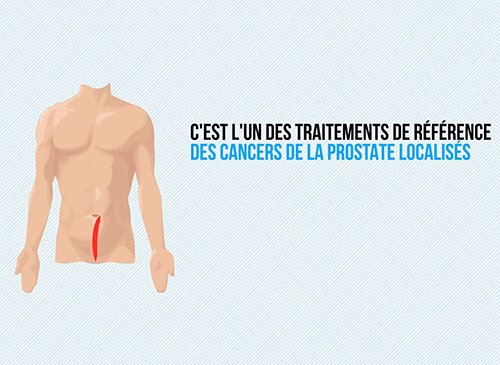The prostate is a gland in the male reproductive system.
Its function is to make and store seminal fluid, an essential component of semen.
The prostate is about the size of a chestnut and weighs 20 to 25 grams (0.8 oz).
It is located underneath the bladder and surrounds the ureter, a channel which ensures the excretion of urine from the bladder.
Because of its location, the prostate can cause urinary problems, in particular if its volume increases or if it becomes cancerous.
Therapeutic indications for prostatectomy
Biopsies have been done and have demonstrated the presence of a malignant tumor.
The recommended procedure is a total prostatic extirpation, also referred to as radical prostatectomy.
This procedure involves the complete removal of the prostate and the seminal vesicles.
In some cases, the adjacent lymph nodes also need to be removed, a procedure referred to as lumpectomy.
Other therapeutic options can be considered such as radiotherapy, curietherapy (actinotherapy), focal therapy and active monitoring.
The advantages and disadvantages of each individual treatment will be discussed precisely during appointment with your urologist.
The choice between total or radical prostatectomy depends on the patient's age, general health and the characteristics of the tumor.
Lack of treatment allows the cancer to evolve either locally or remotely in the form of metastases.
Prostatectomy step by step
Total prostatic extirpation or radical prostatectomy is performed under general anaesthesia.
Different surgical techniques are possible; the choice depends on your urologist's surgical practice:
- open prostatectomy with an incision under the navel
- prostatectomy by keyhole surgery, with instruments inserted through small holes in the abdomen
- robot assisted prostatectomy
Robotic surgery has allowed great progress in the operating technique specifically for nephrectomy as it provides a better operative vision and a greater precision with instruments.
The urologist completely removes the prostate including the tumor and the seminal vesicles.
If necessary, the surgeon will remove the lymph nodes at the same time during the operation.
In all cases, a urinary catheter and a drain will be placed at the end of the operation.
The prostate and any other tissues resected during surgery will be sent to a laboratory or to the anatomical pathology department to be analysed.
These analyses allow for careful observation of the tissue samples and the expansion of cancer cells.
The results will be transmitted to your surgeon within a few days.
Post operative follow-up
In most cases, prostatic extirpation (or radical prostatectomy) is performed without any complications.
Hospital time varies, typically lasting 3 to 5 days.
Pain relievers can be prescribed if needed and an anticoagulant treatment is maintained to prevent any risk of phlebitis.
The urologist will decide when the drain and the urinary catheter should be removed.
The day after the operation, the patient is allowed to get up with supervision by medical staff.
The urologist and patient will decide together when and how to resume normal activities.
As with any surgical procedure, prostatectomy may have some risks and complications related to anaesthesia or to the procedure itself.
Your surgeon will discuss these different questions with you and will give you a written explanatory note in order to obtain your informed consent before the operation.


 en
en 
